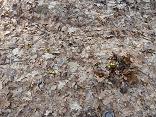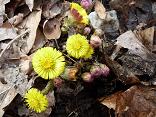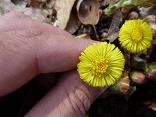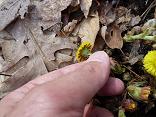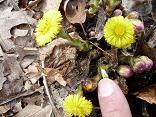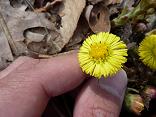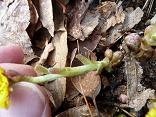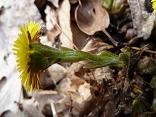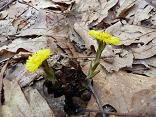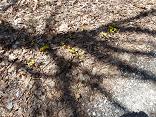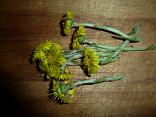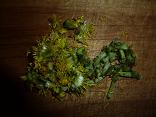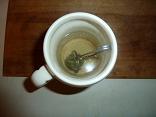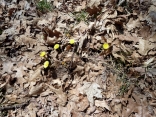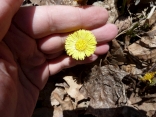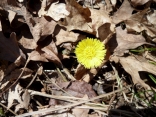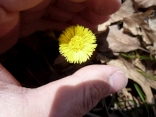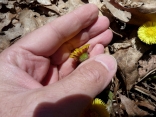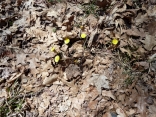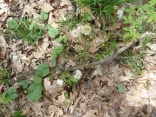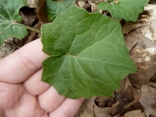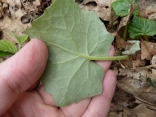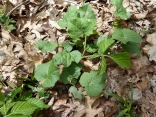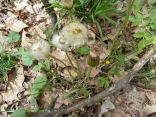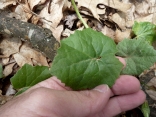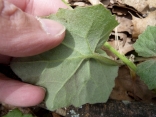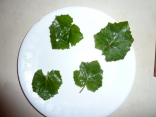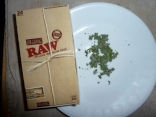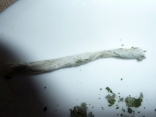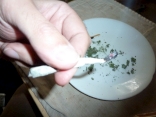All parts of the plant can be used to make a medicinal tea by infusion. However, the leaves are the safest because they contain only trace levels of pyrrolizidine alkaloids that can be hard on the liver. The tea treats asthma, cough, soothes mucous membranes (mucilagenous) and is an expectorant. Use by making a strong infusion or by drying and smoking the leaves.
Coltsfoot is a 3 to 18 inch tall, rhizomous plant. It flowers in early Spring (April to May) - one of the first flowers seen. The yellow flower is 1 inch wide and made up of numerous thin ray flowers surrounding disk/tubular flowers. The flowers bloom first and then the leaves grow out of the stem. The 2 to 8 inch long leaves are basal, broad and heart-shaped (very large notch), has teeth that look like black-tipped spines (irregularly spaced), is shallowly lobed, palmately veined and densely gray-wooly on the underside. The leaves get more rubbery as they age. The two outermost main veins are not completely surrounded by green tissue. The flower stem is scaly. Grows in damp soil of streamsides, waste places, roadsides (paved or gravel roads).
